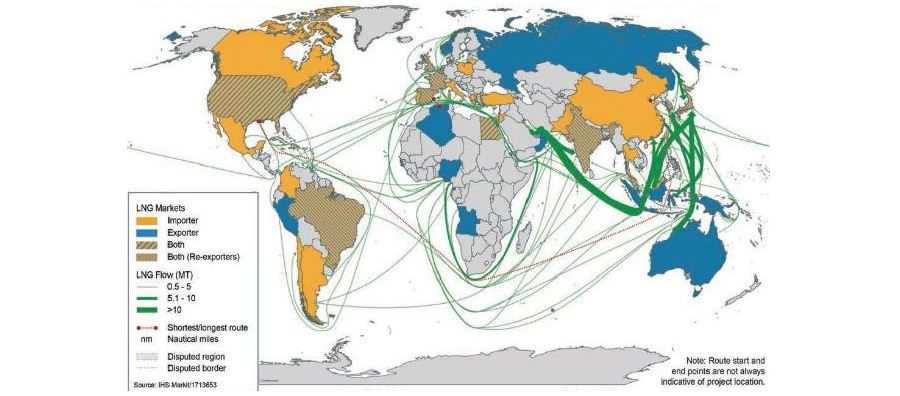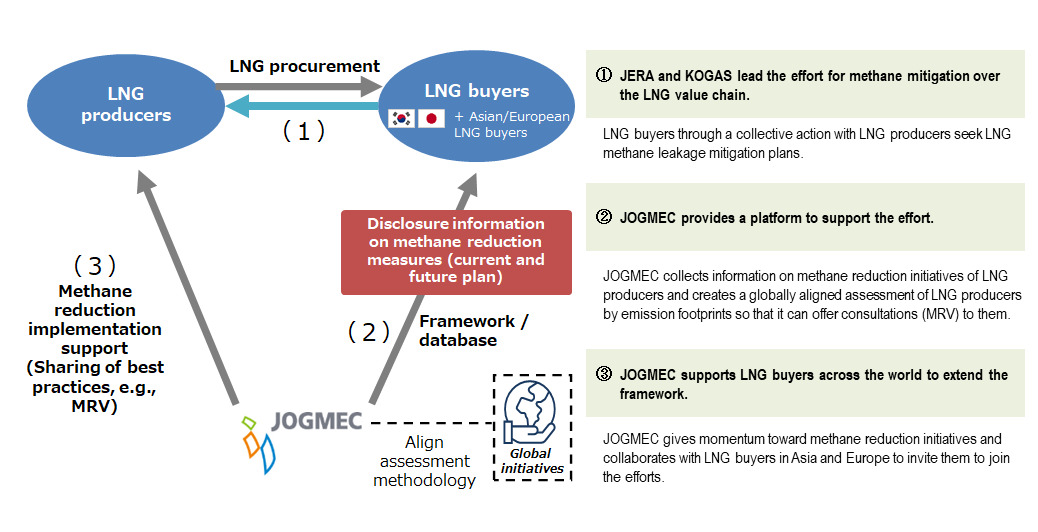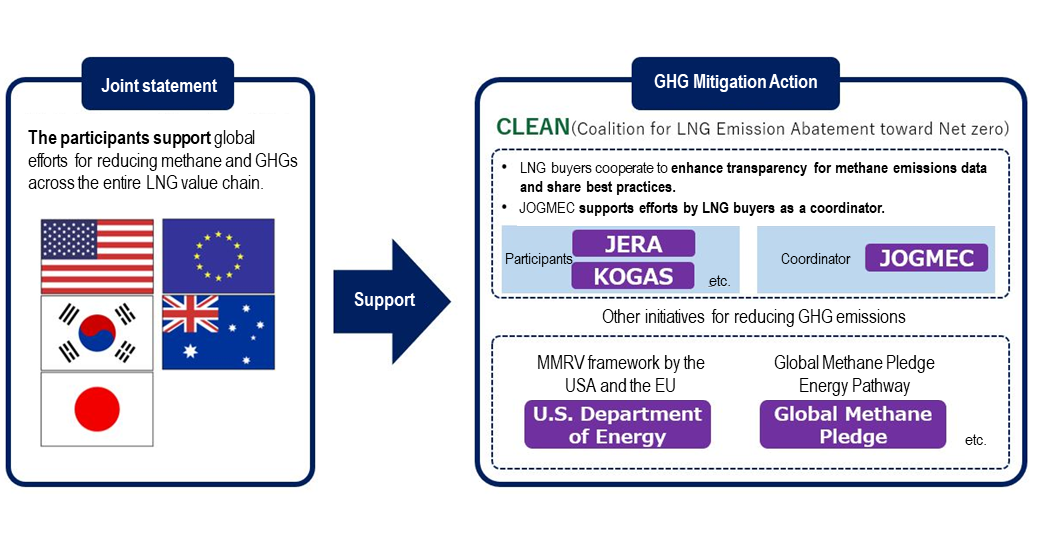Toward a promising future for LNG, Japan leads the world in ensuring its stable supply and addressing environmental issues
(Provisional translation)
(English ver.) 2024-05-16

LNG (Liquefied Natural Gas) is one of the energy resources used for thermal power generation. The LNG Producer-Consumer Conference (LNG PCC) has been held annually since 2012 for producers and consumers to discuss how gas markets should function to ensure a stable supply of LNG. LNG PCC 2023 was held in Tokyo on July 18, 2023. It was the first conference in its history that was officially co-hosted by the Ministry of Economy, Trade and Industry (METI) and the International Energy Agency (IEA) . Rapidly increasing demand for LNG requires rulemaking to ensure a stable supply and solutions to environmental issues. This article highlights the current circumstances surrounding LNG and efforts to overcome those challenges.
LNG PCC 2023 was co-hosted by METI and the IEA for the first time, as the conference is becoming more significant than ever.
Co-hosting the conference with the IEA was first discussed at the IEA Extraordinary Ministerial Meeting held in February 2023. At this meeting, Japan stressed that the gas crisis triggered by Russia’s aggression against Ukraine would not be a short-term crisis limited to Europe and that discussions should be held from a medium-to long-term perspective to prevent such a recurrence. Japan also proposed that a forum for discussions be established between the IEA member states, natural gas/LNG producer and consumer countries, leading to the LNG PCC 2023 in Tokyo. At this conference, a video message by Prime Minister Kishida was displayed to communicate the significance of this conference to the world. LNG PCC 2023 was held in a hybrid format (in person and online) and attended by 17 countries and areas including Japan as well as the IEA and the EC headed by Director-General for Energy. Video messages from minister-level officials from Qatar, the Netherlands, Poland, the ROK, Singapore, Thailand, and the UAE, as well as those from CEO of Petronas (Malaysia’s national energy company) and Dr. Birol, Executive Director of the IEA were shared at the event.
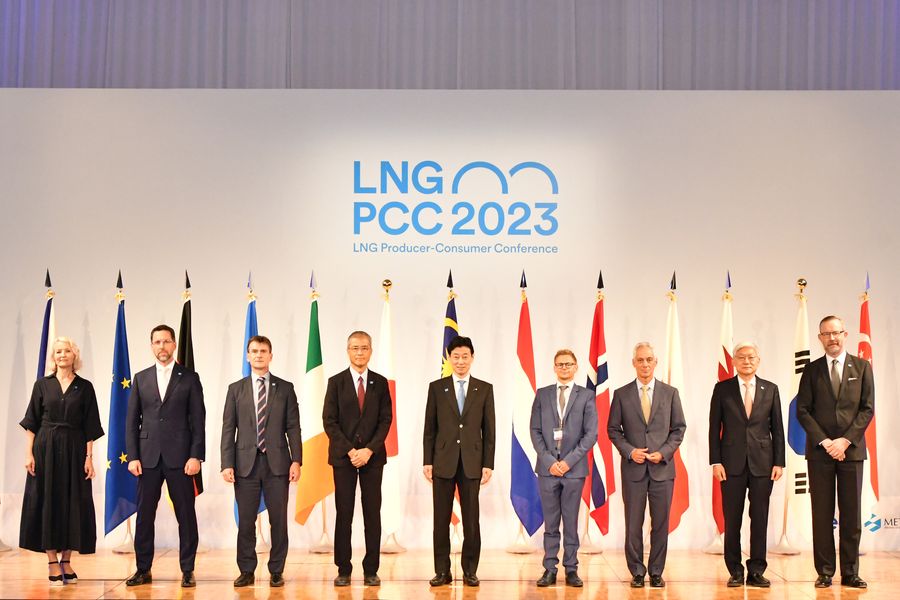
LNG PCC 2023 highlights various challenges facing LNG and envisages the directions of efforts for solving them, as eloquently presented in the conference’s opening film.
Let us look at the highlights of the conference with its objectives.
Objective 1: Enhancing potential roles for the IEA to play in natural gas/LNG
One of the objectives of the conference was to start discussion toward enhancing the potential roles that the IEA is expected to play in natural gas/LNG. Japan proposed the following discussion items toward the IEA Ministerial Meeting in February 2024 on new roles for the IEA to play.
- Examples of roles the IEA is expected to play in gas security
-
 To propose and advise different forms of reserves for natural gas/LNG that are suited to the respective countries’ circumstances,
To propose and advise different forms of reserves for natural gas/LNG that are suited to the respective countries’ circumstances,
-
 To coordinate a consensus between member states on the exchange of information in an emergency and global data transparency
To coordinate a consensus between member states on the exchange of information in an emergency and global data transparency
Natural gas/LNG is harder to store (reserve) and stockpile than crude oil. Generally, the following three methods are thought to be useful for securing its reserves. If respective countries employ different forms of reserves based on their own circumstances, it will contribute to global energy security. To this end, the IEA is expected to make propositions and provide advice.
1) Underground storage
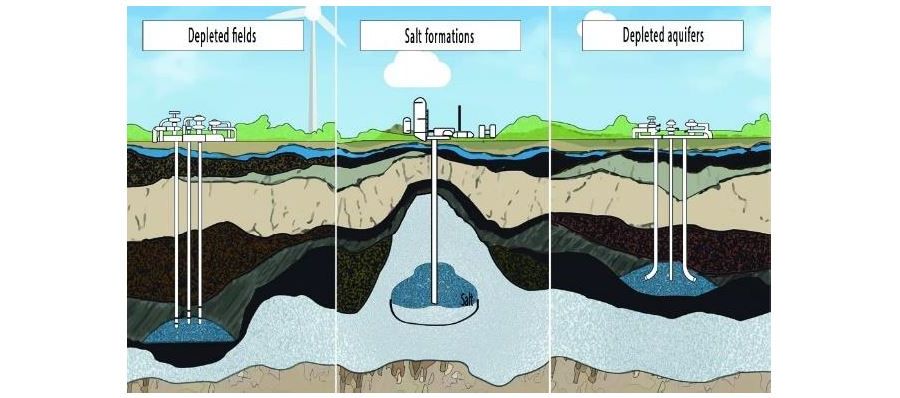
This is a method whereby natural gas is injected into and stored underground in a gaseous state. For instance, gas is injected into a depleted gas field that can be utilized as a storage site. This method is common in Europe and the United States which have a large number of depleted gas fields. It allows for large-scale, long-term storage. However, there are in fact not many areas in which this method is suitable.
2) Securing a surplus of LNG
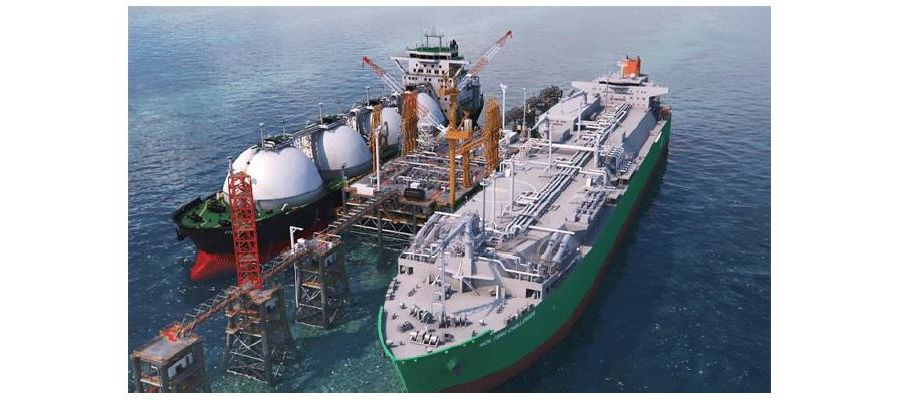
A surplus of LNG can be procured by building additional storage capacity beforehand. It can be used as a buffer against any supply/demand imbalance. This method can be utilized by importers and a surplus of LNG may be strategically traded in the market during non-crisis periods to reduce procurement costs.
3) Procurement mechanisms favoring a more flexible supply of LNG
Flexible schemes in LNG procurement contracts could be employed, such as increasing offtake in line with demand or swapping LNG carriers. This method does not require holding a real cargo, and therefor can get around technical issues caused by physical storage of gas or LNG.
Objective 2: Accelerating methane mitigation from the LNG value chain
Methane, a greenhouse gas (GHG), is a major component of LNG. It is emitted from the value chain including the production process of LNG. For instance, methane emissions are unavoidable in the case of long-distance transportation via pipeline from the gas field to the liquefaction facilities. Methane also leaks from the liquefaction process. Accelerating methane mitigation is a critical global challenge.
In an effort to reduce methane emissions, the Coalition for LNG Emission Abatement toward Net-zero (CLEAN) was announced at LNG PCC 2023. It is an initiative launched by Japan’s JERA and Korea Gas Corporation (KOGAS) with JOGMEC providing support as a coordinator.
CLEAN stresses the importance of enhancing transparency for methane emissions associated with the LNG value chain and sharing best practices. It aims to make the LNG value chain cleaner by allowing major LNG buyers in Japan and the ROK to talk to LNG producers regarding reducing methane emissions. It is expected that this framework will be extended to involve other private companies in the future.
Japan, the USA, the ROK, Australia and the EC expressed strong support for accelerated GHG reduction and methane reduction efforts across the LNG value chain, and especially for the CLEAN initiative, and officially signed a joint statement to this effect.
Objective 3: Efforts to increase liquidity in the LNG market
Unlike oil markets, the LNG market is small in terms of both trade volume and number of players. Therefore, LNG is mostly traded via off-market, direct transactions. Without liquidity, a market will not take shape and prices may remain high.
As energy prices are increasingly volatile, it is critical for private companies to secure funds necessary for procurement as the situation demands.
When private companies enter into long-term purchase contracts, they must carefully consider how to utilize LNG that emits GHGs while aiming to achieve carbon neutrality by 2050. Establishing a trading mechanism that enables short-term transactions is the key. Under this scheme, players need plenty of funds to repeat short-term transactions.
To encourage many companies to enter such a market and increase liquidity, it is necessary to provide funds in a flexible manner. In March 2023, Nippon Export and Investment Insurance (NEXI) changed its system for providing funding support for LNG trading by developing a new insurance product to cover short-term bank loan facilities.
The first LNG trading to which NEXI has provided support
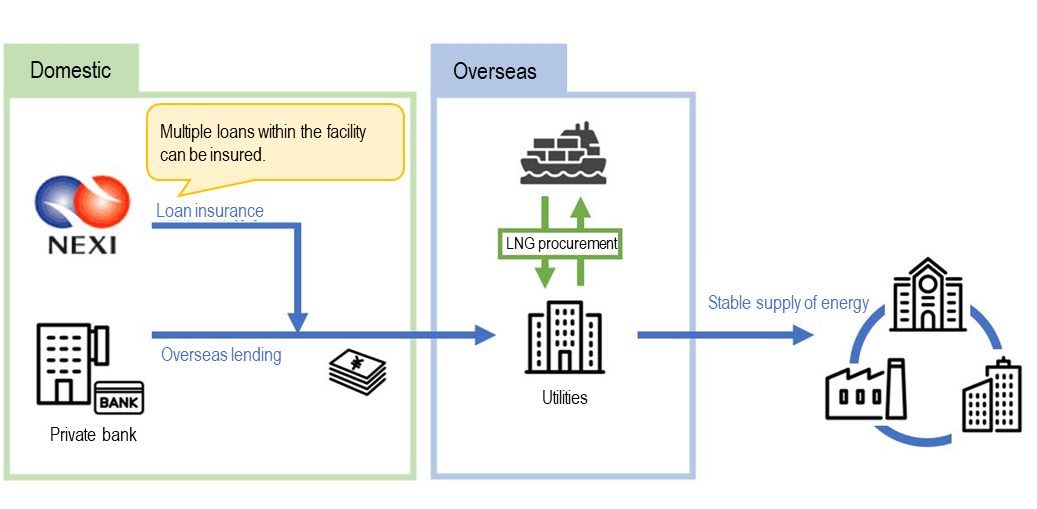
LNG trading support scheme made possible by the system change
Furthermore, the relevant ministerial ordinance of METI was amended in July 2023 so that risks associated with loans provided to domestic companies for overseas projects can be insured by NEXI. The insurance covers a wider range of projects which include the “enhancement of supply chain resilience.” This is expected to help Japanese companies raise massive amounts of funds domestically to purchase LNG.
Example of a Japanese company raising fund to purchase LNG
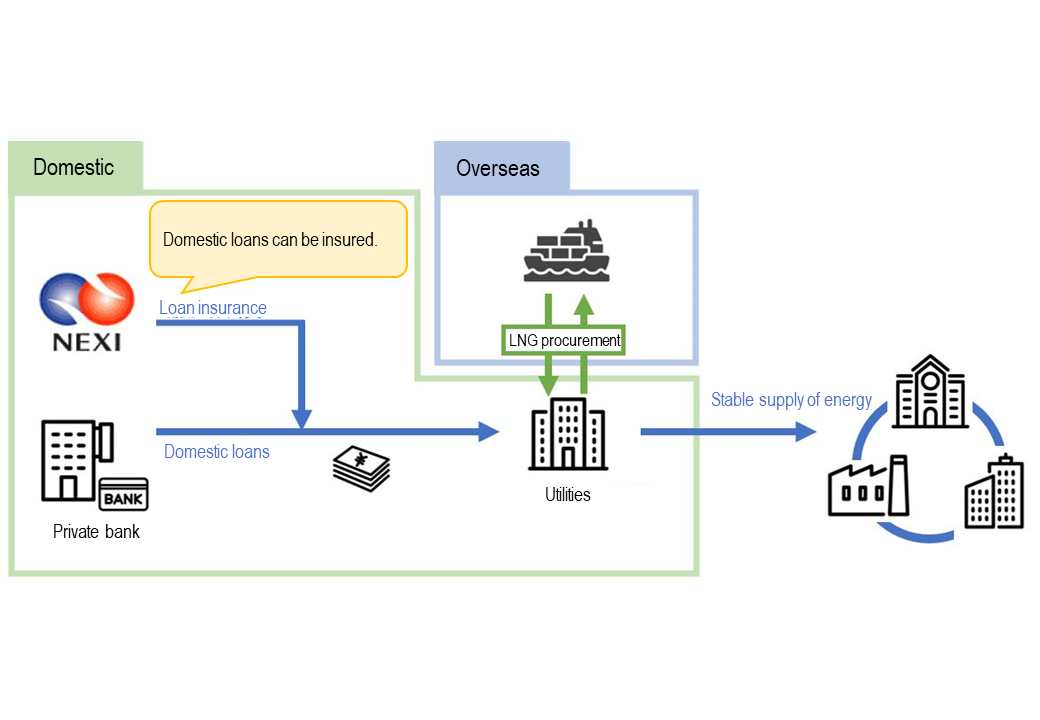
Scheme for the enhancement of supply chain resilience made possible by the amendment of the relevant ministerial ordinance
These efforts made by NEXI were presented at LNG PCC 2023.
*****
Chair’s Summary for LNG-PCC 2023 titled “LNG Strategy for the World” was announced as an outcome document. Japan, as the LNG PCC 2023 Chair, requested that participants share existing policies and voluntary commitments for a cleaner LNG value chain to achieve net-zero and increase LNG/natural gas security, which were included in the document.
The Chair’s Summary stresses that natural gas/LNG has a role to play during the transition toward a net-zero future. Japan’s voluntary commitments included contributing to the discussion on the potential roles for the IEA to play in natural gas/LNG.
We will advance our efforts toward establishing various mechanisms to ensure a stable supply of LNG.
Divisions in Charge
About this article
Energy Resources Development Division, Natural Resources and Fuel Department, ANRE
About the Special Contents
Research and Public Relations Office, Commissioner’s Secretariat, ANRE
![]() The original Japanese text of this article; Click here
The original Japanese text of this article; Click here
